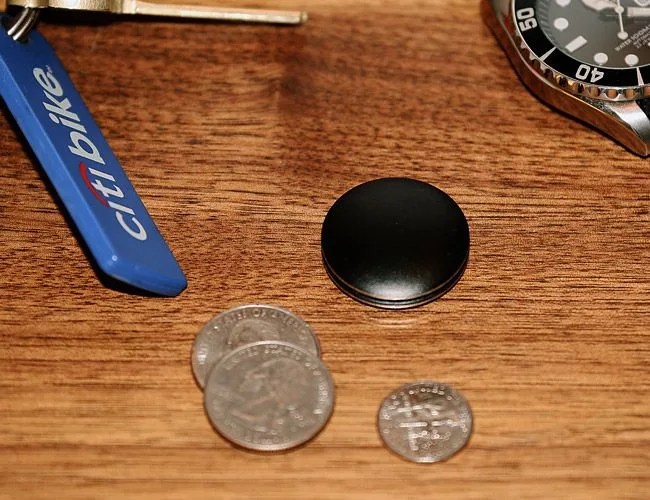What makes a good wearable? Comparing a laundry list of features is one way to start the conversation. The Misfit Shine ($97), however, proves that there’s something to be said for keeping things simple. The aircraft-grade aluminum tracking disc is available in four different color options and sized for discretion, slightly larger than a quarter in diameter and thinner than four quarters in a stack. It also weighs almost nothing at 0.3 ounces. Combined with various accessories like the included rubber sport band and magnetic clasp or optional upgrades like a necklace and leather watch band, it’s easy to see the Shine more as a piece of smart jewelry than a fitness tracker. Whether that’s a good or bad thing is a matter of personal preference.
MORE FITNESS TECH: Testing the TomTom Multisport | 10 Empowering Apps for the Everyday | Best Fitness and Dieting Apps
The Misfit’s small stature and clean looks conceal a processor, a three-axis accelerometer, a Bluetooth Low-Energy transmitter and an array of 12 LED lights used for displaying the time and progress toward a current fitness goal (more on that later) in minimalist fashion. It relies on a replaceable watch battery for power. This particular combination of bare-bones specs creates a few interesting compromises.
As a glorified pedometer, the Misfit Shine provides limited data insights compared to competing devices. It tracks basic movements and can tell the difference between walking, running, cycling and even sleeping with a little input from the user. An activity mode setting in the companion app allows wearers to set up a special exercise apart from walking that can be triggered by tapping the face three times quickly. If you want to switch the activity triggered by tapping, you’ll have to dive back into the app again. A lack of altimeter means that you won’t get credit for the extra work of stairs or a ridgeline hike.

Information is manually synced with iPhone and Android devices using the company’s cleanly executed Android or iOS app. It’s a wireless process, but the tracker’s reliance on Bluetooth Low-Energy means the Shine must be physically tapped against the phone screen to trigger the data transfer. This isn’t a difficult workflow, but it does require an extra step or two over competing solutions.
Like Nike’s “fuel points”, Misfit has developed its own activity-based reward system. It’s reasonably simple: various activities (jogging, walking, cycling) receive different intensity ratings (“METs”) from the Misfit’s accelerometers. That rating is multiplied by time and the user’s weight to calculate calories burned. Unlike Beaverton’s approach, Misfit’s execution is purely on the individual, though, so those in need of social peer pressure to keep working should also look elsewhere.
